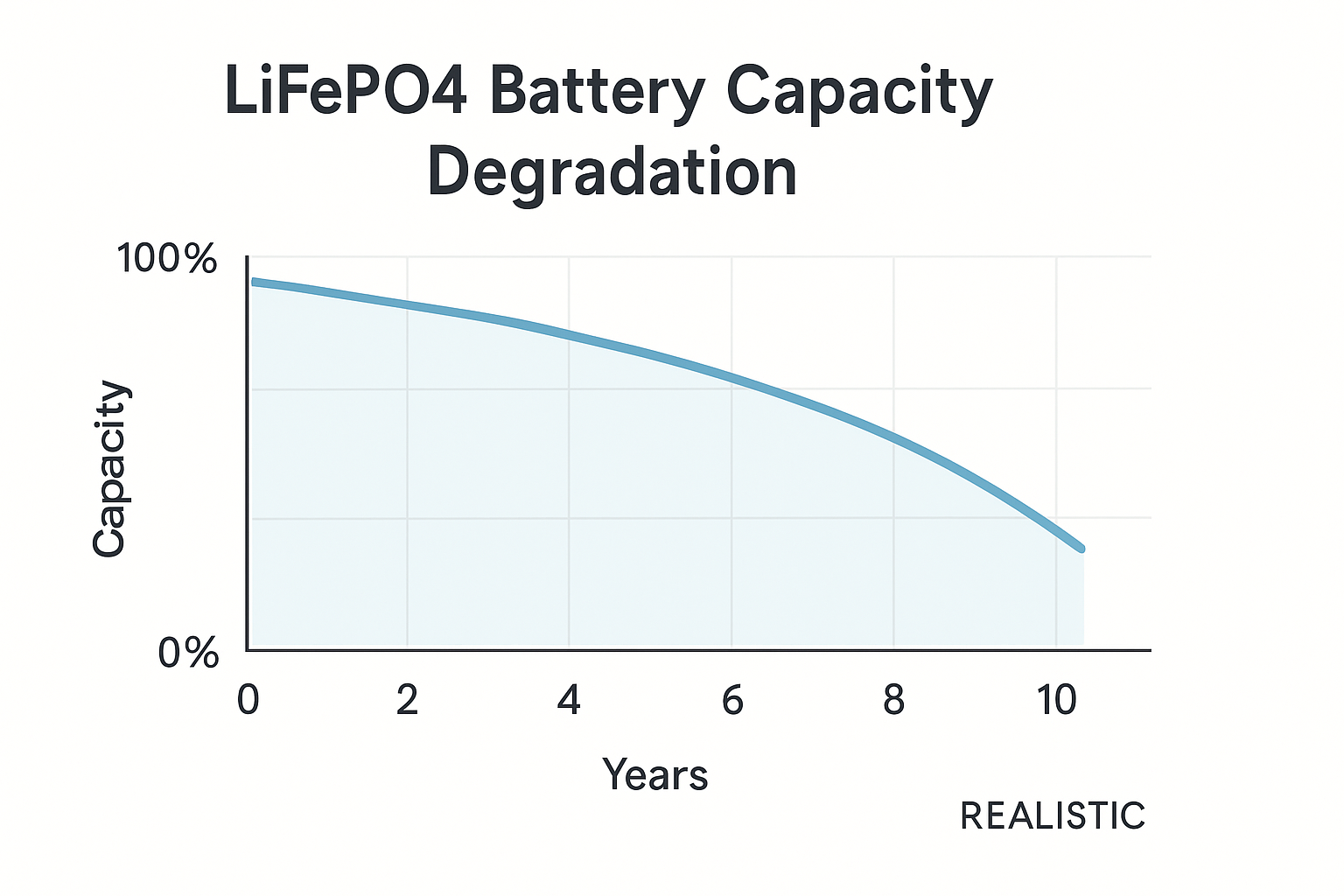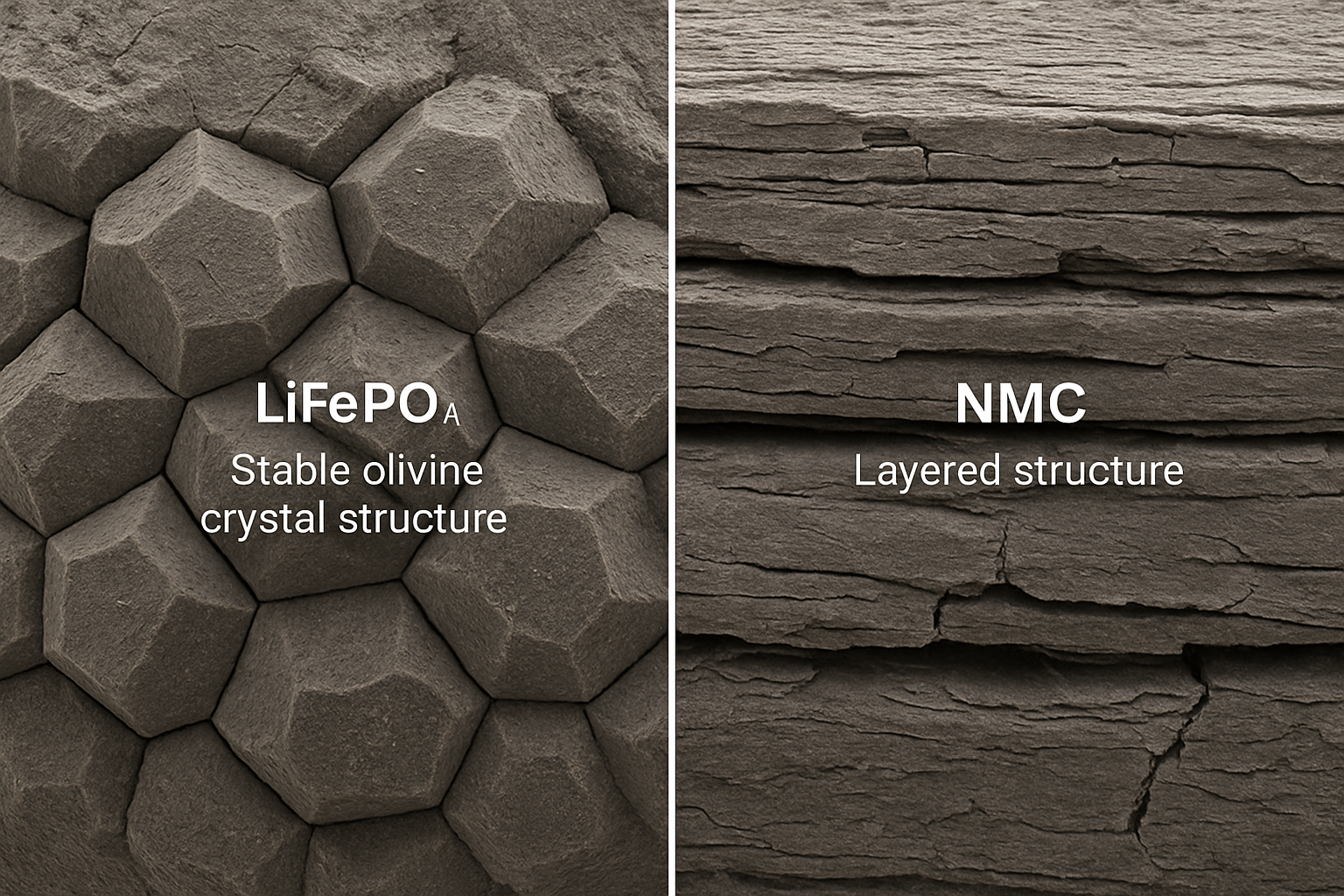When evaluating energy storage solutions, longevity is a primary consideration. A battery's lifespan directly impacts the return on investment and the reliability of your power system. Among modern battery technologies, Lithium Iron Phosphate (LiFePO4) stands out for its impressive durability. A key metric used to quantify this durability is 'cycle life'. Understanding what cycle life means is fundamental to appreciating the long-term value of LiFePO4 batteries.
What Exactly Is a Battery Cycle?
The term 'cycle life' is frequently mentioned in battery specifications, but its precise definition is often misunderstood. It is more than just a number; it is a standardized measure of a battery's endurance under specific conditions.
Defining a Charge-Discharge Cycle
A single cycle is one full charge followed by one full discharge. For example, charging a 100Ah lithium ion battery from empty to full and then using all its power until it is empty again constitutes one cycle. However, cycles are cumulative. If you discharge the battery to 50% and then recharge it, you have completed half a cycle. Doing this twice is equivalent to one full cycle. This concept is important for applications like solar energy storage, where batteries often undergo partial charging and discharging daily.
How Is Cycle Life Measured?
Manufacturers determine cycle life through controlled testing. A battery is repeatedly charged and discharged under specific conditions, including a set temperature, charge rate, and discharge rate. The cycle life rating indicates how many full cycles the battery can endure before its capacity drops to a certain percentage of its initial rating, typically 80%. A specification of '4,000 cycles at 80% Depth of Discharge' means that after 4,000 full cycles of discharging to 80% of its capacity, the battery will retain at least 80% of its original energy storage capability. It does not mean the battery will suddenly fail.
Why Capacity Fade Matters
Batteries do not stop working abruptly. Instead, they experience a gradual decline in their ability to hold a charge, a process known as capacity fade. The cycle life rating provides a predictable performance benchmark. This allows system designers and users to forecast the battery's performance over many years, ensuring the energy storage system will meet their needs for its entire operational life. According to the International Energy Agency (IEA), predictable degradation rates are crucial for integrating storage into reliable energy grids.
The Science Behind LiFePO4's Superior Longevity
The exceptional cycle life of a LiFePO4 battery is not an accident; it is a direct result of its unique chemical and structural properties. The stability of its core components allows it to withstand the stresses of repeated charging and discharging far better than other battery types.
The Stability of the Olivine Structure
LiFePO4 chemistry is based on a crystalline structure known as olivine. The phosphorus-oxygen (P-O) bonds within this structure are incredibly strong and stable. This robust framework prevents the cathode material from degrading or changing shape during the movement of lithium ions. In many other lithium-ion chemistries, this structural breakdown is a primary cause of capacity loss over time. The inherent stability of the olivine structure is the main reason LiFePO4 batteries last so long.
Low Internal Resistance and Thermal Stability
Heat is a significant contributor to battery degradation. LiFePO4 batteries have a lower internal resistance compared to other lithium chemistries, which means they generate less internal heat during charging and discharging. This thermal stability reduces stress on the battery's internal components. The U.S. Department of Energy notes that managing temperature is critical for extending battery life, and LiFePO4's chemistry provides a natural advantage in this area, contributing directly to a longer and safer operational life.
Key Factors Influencing Real-World Cycle Life
While LiFePO4 chemistry provides a high potential for longevity, the actual cycle life achieved in an application depends heavily on how the battery is used. Several operational factors play a critical role.
Depth of Discharge (DoD)
Depth of Discharge refers to the percentage of the battery's capacity that is used in each cycle. There is an inverse relationship between DoD and cycle life: shallower discharges lead to a much longer lifespan. For instance, a battery consistently discharged to 50% will last for significantly more cycles than one regularly discharged to 100%.
| Depth of Discharge (DoD) | Typical Cycle Life |
|---|---|
| 100% | 2,000 - 4,000 Cycles |
| 80% | 5,000 - 7,000 Cycles |
| 50% | 10,000 - 15,000 Cycles |
Temperature's Role in Longevity
Operating a LiFePO4 battery within its ideal temperature range is crucial. This is typically between 15°C and 25°C (60°F to 77°F). High temperatures accelerate the chemical reactions that cause degradation, permanently reducing capacity. Charging at temperatures below freezing can cause lithium plating on the anode, which is also a cause of permanent damage. A well-designed system will include thermal management to protect the battery from extreme temperatures.
Charge and Discharge Rates (C-Rate)
The C-rate measures how quickly a battery is charged or discharged relative to its capacity. A 1C rate on a 100Ah battery means charging or discharging at 100 amps. While LiFePO4 batteries can handle relatively high C-rates, using lower rates (e.g., 0.2C to 0.5C) is gentler on the battery. Lower rates generate less heat and put less mechanical stress on the electrode materials, helping to maximize cycle life. A deeper analysis of these performance metrics, as detailed in the ultimate reference for solar storage performance, shows how managing C-rate is crucial for system efficiency and longevity.
A Final Perspective on Battery Longevity
Understanding LiFePO4 cycle life goes beyond a single number on a datasheet. It involves appreciating the battery's stable chemistry and recognizing how operational factors dictate its real-world performance. The longevity of LiFePO4 technology is rooted in its stable olivine structure, which resists degradation from cycling and heat. By managing factors like Depth of Discharge, temperature, and C-rate—often automated by a high-quality Battery Management System (BMS)—users can ensure their energy storage system delivers reliable power for thousands of cycles. This makes a 12v 100ah lifepo4 lithium battery or a larger 48v lifepo4 battery a sound investment for achieving long-term energy independence.
Frequently Asked Questions
Does a LiFePO4 battery lose capacity even if not used?
Yes, all batteries experience some self-discharge and calendar aging, but LiFePO4 has a very low self-discharge rate, typically around 1-3% per month. Storing it at a partial state of charge (around 50%) in a cool, dry place can minimize this aging process.
How does LiFePO4 cycle life compare to other battery types?
LiFePO4 batteries offer a significantly longer cycle life compared to traditional lead-acid batteries (which may last 300-1000 cycles) and other lithium-ion chemistries like NMC or LCO (typically 1000-2000 cycles). This durability makes them ideal for applications requiring frequent cycling, such as home battery storage systems.
Can a good BMS really extend the cycle life?
Absolutely. A Battery Management System (BMS) is critical. It prevents overcharging, over-discharging, and operation in extreme temperatures. By keeping the battery cells balanced and within safe operating parameters, a quality BMS directly contributes to achieving the maximum possible cycle life from your lithium battery pack.





Leave a comment
All comments are moderated before being published.
This site is protected by hCaptcha and the hCaptcha Privacy Policy and Terms of Service apply.